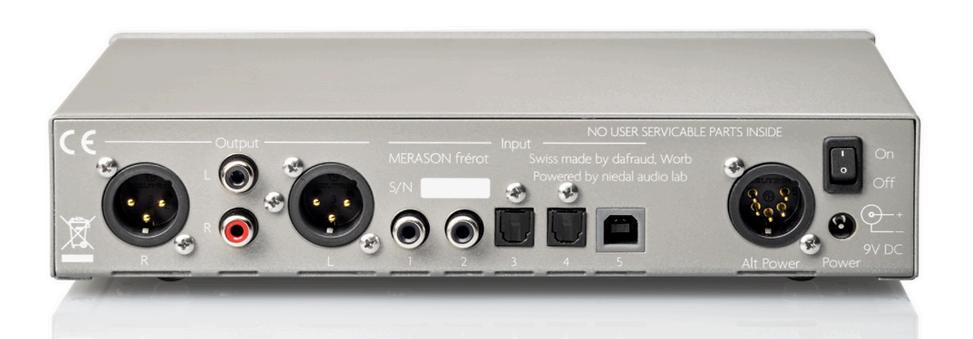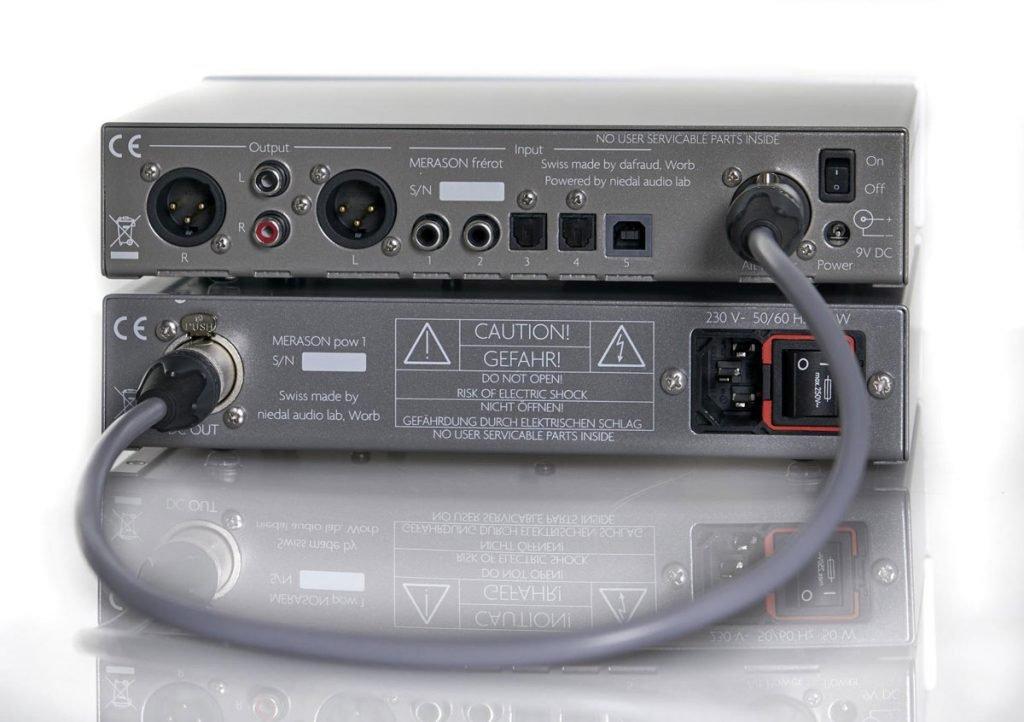
2 minute read
MERASON FRÉROT & POW1 MERASON FRÉROT & POW1
the actual topic at hand; Merason’s $1350 frérot + $950 pow1 USB DAC plus linear power supply. The frérot take a minimalist approach in keeping with the Merason motto of “Weniger ist mehr” or less is more. Rather than using a state–of–the–art, delta–sigma chip, the frérot leverages a now nineteen year old consultancy Niedal Audio Lab, believes that your ears, not specs, should be the final arbiter, and the old ways are best even when dealing with digital. His two piece, mid–priced frérot DAC plus pow1 external power supply are as free of clutter as they are of features. The frérot has two front panel LED indicators, one for
design.
Advertisement
HICK’S LAW
Some DACs or Digital–to–Analog Converters allow you to dive deeply into their digital heart. The owner may decide to try different anti–image filter topologies‡ or to choose a solid or hollow state input stage. Choice is good…up to a point. Increased numbers of possibilities increases the amount of time it takes for someone to reach a decision. Welcome to Hick’s Law, where more options increase the time required to make a choice. With the Merason frérot, one need not worry. Its designer, Swiss engineer Daniel Frauchiger and founder of both Merason and OEM power and another for input lock. The only other fascia property is a four–position rotary input selector. That’s it, Doctor Hicks. No information overload here.
Though the frérot can be powered from an included external 9v wall wart, for this review the much cleaner companion pow1 PSU was supplied. On the rear panel are balanced and unbalanced outputs, along with two AES-3 unbalanced digital inputs on RCA, two AES-3 optical ins on F05, and a single USB Type A socket for connection to a computer. For this review, I ignored the inferior, jitter–prone optical ins as well as the AES digital inputs, and focused solely on the frérot’s USB input.
Certain folks are driven as much by their eyes as they are by their other senses. I am not one of them. I’ll always appreciate an excellent example of industrial composition, but it’s the sound that really matters. Some companies also travel along a different path, a minimalist approach where many choices are made released in the Digital Dark Ages circa 2003. Each chip is capable of stereo operation but is wired to provide a single channel for an extra 5 decibels of decreased noise floor.

Le Coeur De Mon Fr Rot
The Burr–Brown division of Texas Instruments (TI) refers to their 1794 as an “ultra high
44.1k samples per second on up to 192k or 4 x 48kHz. En français, frérot means “kid brother,” and the frérot DAC shares an old skool converter with his big brother, the DAC1. Both products employ Burr–Brown’s 24 bit PCM1794A monolithic DAC chips, first each optimized for a different role. One DAC handles the MSBs or most significant bits, the loud stuff, while another handles the quiet LSBs or Least Significant Bits. The outputs of the two “segments” are then added together for the final signal. The 1794 implementation sits







